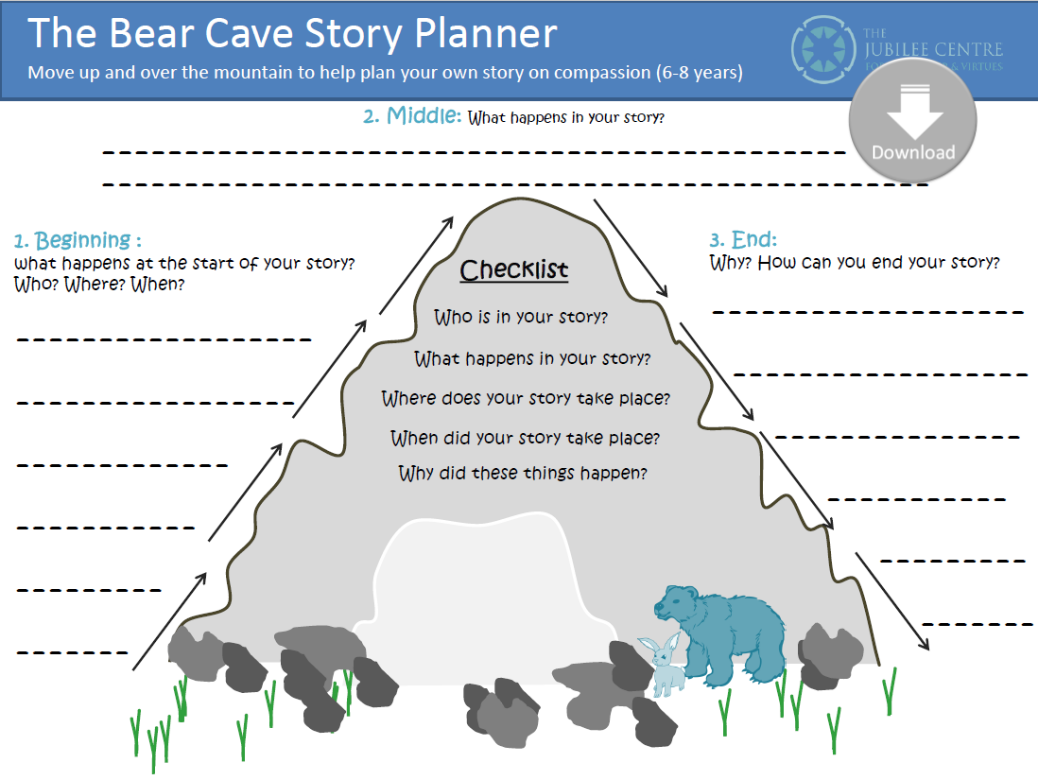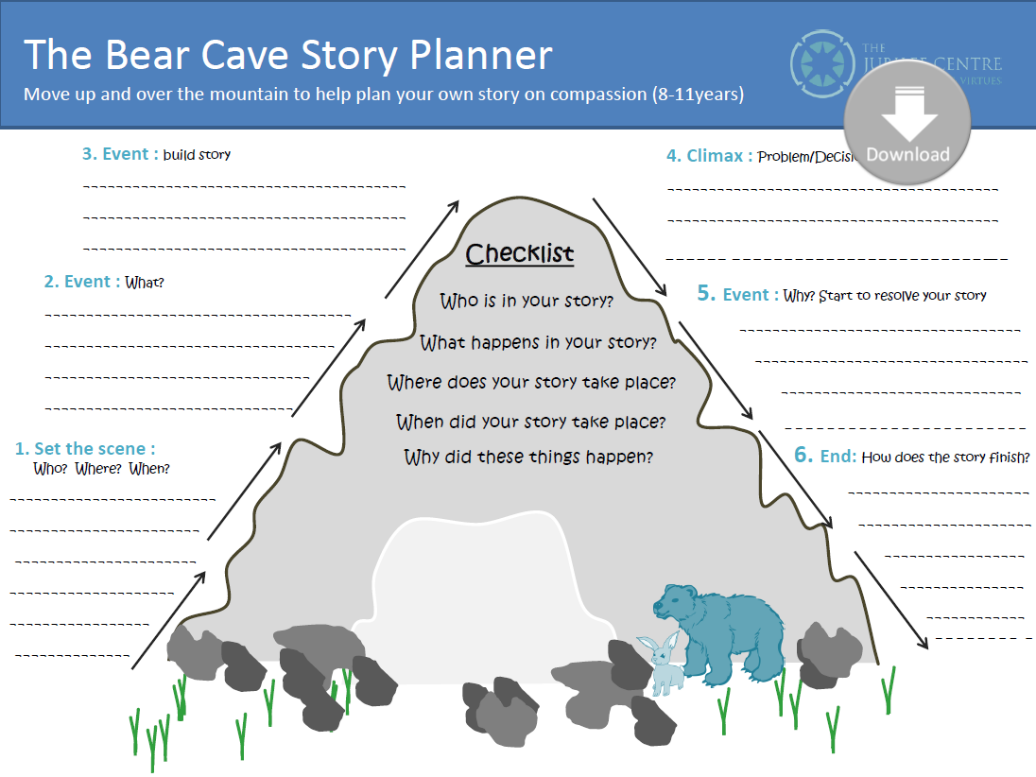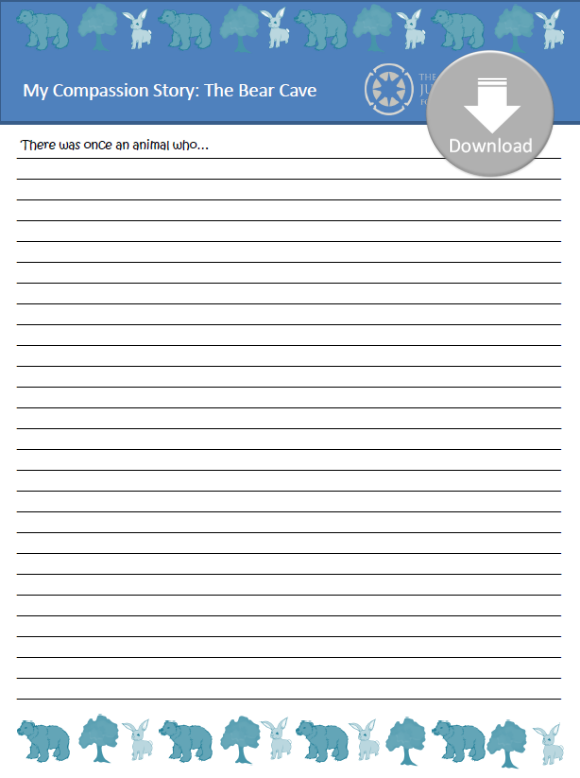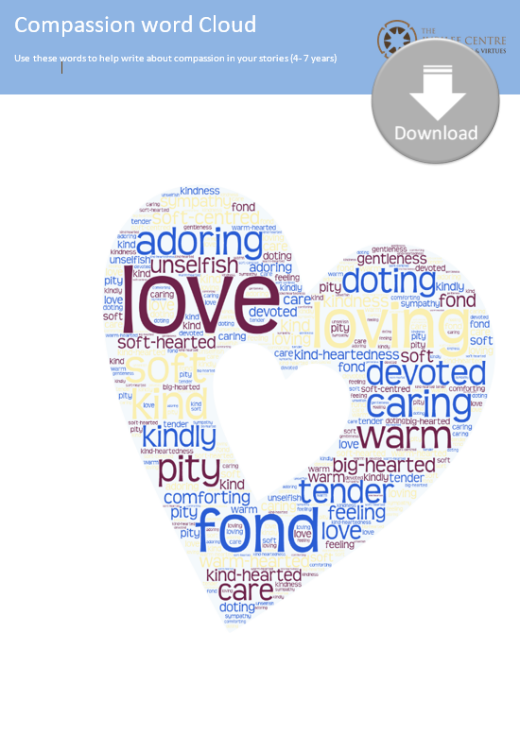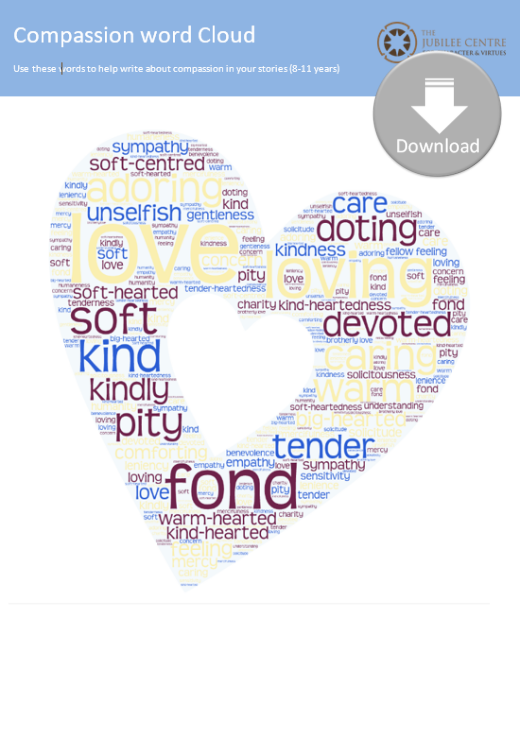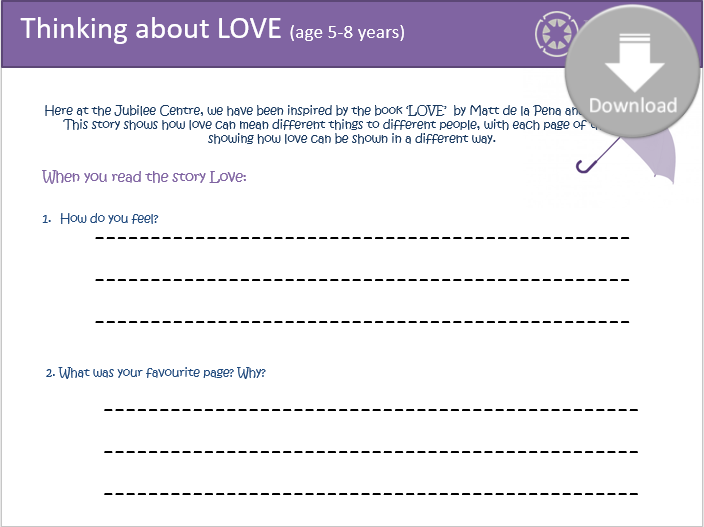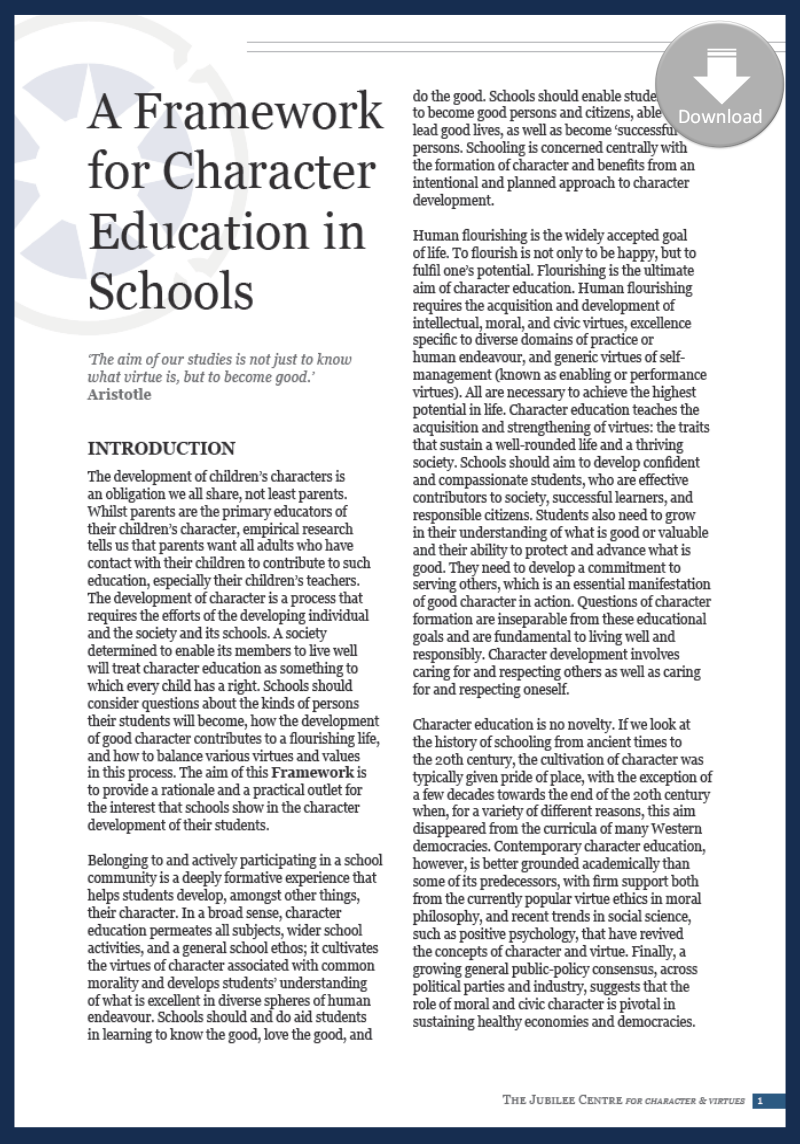 The Jubilee Centre for Character and Virtues has compiled some great resources to enhance your child’s literacy skills and encourage them to reflect on some of the virtues included in the A Framework for Character Education in Schools. Each month there will be a focus on one or two different virtues in the Parents Resources section of the Jubilee Centre website.
We would appreciate hearing how you get on with these resources. Feel free to give us your feedback. Please do comment on our Facebook and Twitter pages, using the twitter handle @jubileecentre1 or #virtuousreading. You could even post a photo of the end result, if you like.
The Jubilee Centre for Character and Virtues has compiled some great resources to enhance your child’s literacy skills and encourage them to reflect on some of the virtues included in the A Framework for Character Education in Schools. Each month there will be a focus on one or two different virtues in the Parents Resources section of the Jubilee Centre website.
We would appreciate hearing how you get on with these resources. Feel free to give us your feedback. Please do comment on our Facebook and Twitter pages, using the twitter handle @jubileecentre1 or #virtuousreading. You could even post a photo of the end result, if you like.
The following resources are created for parents/guardians to help children think and write about compassion. Often, being faced with a blank page, children feel discouraged from writing. This is especially true when it comes to writing stories. Where to start? How to structure? What vocabulary to include? It is understandable that children might feel intimidated by the writing process. Nonetheless, writing can be an exciting, joyful way to learn about virtue (and literacy skills). All that’s needed is something interesting to write about, a good plan and some wonderful words to use.
Parents/guardians and children are encouraged to watch a short film together which highlights the virtue of compassion. This may provide the inspiration for the child’s own story and will be a great opportunity to start discussing virtues. A recommended example is the John Lewis 2013 advert, The Bear and the Hare, on YouTube, and talking through what the story might be about and the range of virtues it highlights.
Parents/guardians can then help children plan their stories using the bear cave story planner. Here it is important to guide children to see that stories follow an arc, building up to a problem or decision etc and then resolving towards an ending.You can freely access these resources by clicking on the images below. We have created two story planners to enable children of all ages and abilities to participate. Please note, the age groupings are only a rough guide.
Children could use the tailor made, bordered paper to write their story on.You can freely access this by clicking on the image below.
To help give the stories life, two compassion related word clouds are provided. Some of these words are very challenging; children love extending their vocabulary. It may be necessary to discuss them with your child using a dictionary. You can freely access these resources by clicking on the images below. The word clouds enable children of all ages and abilities to participate. Please note, the age groupings are only a rough guide.
Using the resources below, in conjunction with the book ‘LOVE’ by Matt de la Pena and Loren Long, parents/guardians can facilitate reflection on compassion. The book beautifully shows how love and compassion may happen unexpectedly and vary depending on context. Here, parents/guardians can help children compose their own poem to reflect love, using the poetry planner. To help with this, we have written some questions on LOVE to help parents/guardians and children to reflect on some of the themes raised by the book. For younger children we have written an acrostic poem as an example they can use for inspiration. For older children, we encourage them to write their own free verse. Both groups can use our bordered paper to add a little decoration to their poems. Please note, the age groupings are only a rough guide.
The following resources are based on Jo Cotterill’s A Library of Lemons. The book shows how important compassion is, especially in difficult circumstances. While reading the book, parents/guardians and children can reflect on kindness and resilience together using the structured questions tailored to the book’s content. They can also plan and write a letter together using the letter template. To help parents/guardians and children to do this, we have included a description of the letter task, a list of the features of a letter and an exemplar of how to start. Please note, the age groupings are only a rough guide.

